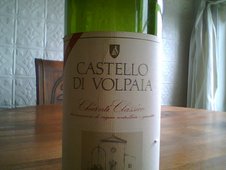Showing posts with label Haus Alpenz. Show all posts
Showing posts with label Haus Alpenz. Show all posts
Tuesday, October 4, 2011
Byrrh to Return to U.S. Shelves
Byrrh is a French aperitif, a 125-year-old red-wine-based quinquina that thrived in the early 20th century. It was created by two brothers with the poetical names of Pallade and Simon Violet, and initially marketed as a health drink and sold in pharmacies. It's popularity declined after World War II, despite an heavy ad campaign. (It's hard-to-pronounce name couldn't have helped.) In 1961 the business was sold to CDC who made Dubonnet and Cinzano, which was later merged with Cusenier. In 1977 the brand was bought by Pernod.
Byrrh hasn't been seen on the American market for many years. But, as with many another European aperitif and digestif in recent years, it is now on its way back, it's return instigated by the demands of mixologists, the passion of liquor aficianados and the diligence of quixotic importers like Haus Alpenz. That house, run by Eric Seed, is in fact the one brining Byrrh in.
Byrrh is gentle by quinquina standards: fairly sweet, only mildly bitter—it reminds me of Bonal (another Haus Alpenz import) a bit—and has a fuller body than some aperitifs. The red wine used as the base hails from the Languedoc Roussillon—in the past the source of tons of very middling plonk, but lately the home of vintners of fine, affordable and experimental reds. It's generally drunk cold, straight or on the rocks.
Tuesday, May 18, 2010
Damson Gin Coming to U.S.
England likes gin. They have London Dry Gin, Plymouth Gin, Sloe Gin, Damson Gin.
Wait. What was that last one? Damson Gin. It's similar to Sloe Gin, only it's made with damson plums, not sloe berries. Damsons are smaller, tarter and more acidic than regular plums. On this side of the pond, we all know damsons from the higher-priced, imported jellies and jams we see lining the shelves of our local boutique food purveyors. But in England, Damsons are also used to make a sweetened, gin-based liqueur. Plymouth used to make a Damson Gin.
There is currently no Damson Gin in the U.S., but that will change in the next few months. Scott S. Krahn, who represents Eric Seed's Haus Alpenz catalog of unique liquors, has been toying with a recipe for the stuff in upstate New York, where damsons are grown. The fruit comes from a farm in Geneva, NY, and he enlisted Finger Lakes Distilling to execute his formula, which he expects to release commercially in July.
The Damson gin is lighter, tarter and has more of an alcoholic bite that Sloe Gin. (Krahn bottles it at 33% alcohol; Plymouth Sloe Gin, by contrast, is 26%.) I cautiously predict that it will quickly become the cocktail mixer of the moment soon after it hits the shelves. It delivers a flavor profile unlike no other currently available liqueur.
The product currently has no name. (See the bottle with the blank label above.) It will be priced at $25.
And speaking of Sloe Gins, Hayman, of Old Tom Gin fame, has a fine Sloe Gin, but at present it's only available in the UK. It's lighter, less viscous than the Plymouth version. Worth bringing in one of these days.
Subscribe to:
Posts (Atom)



